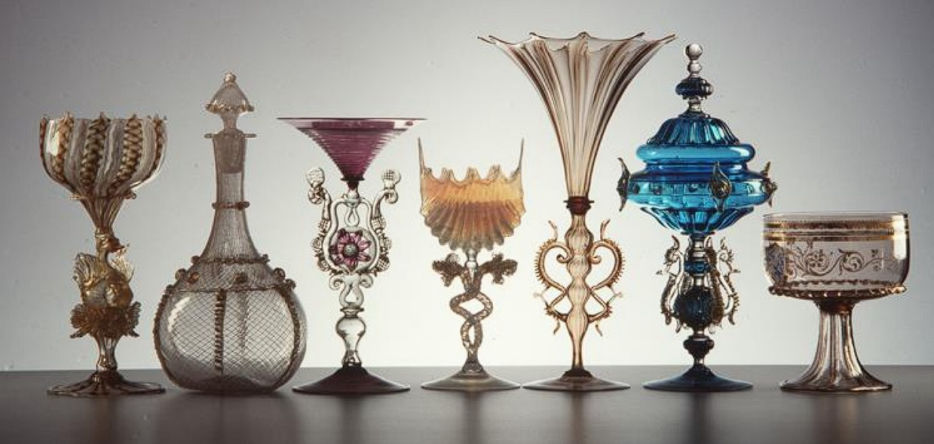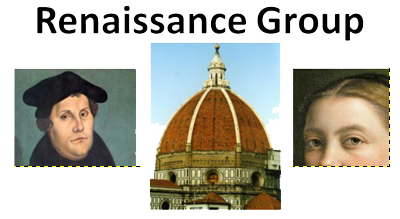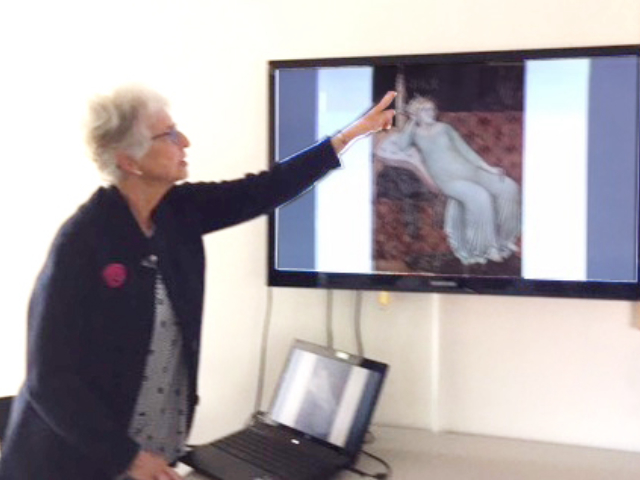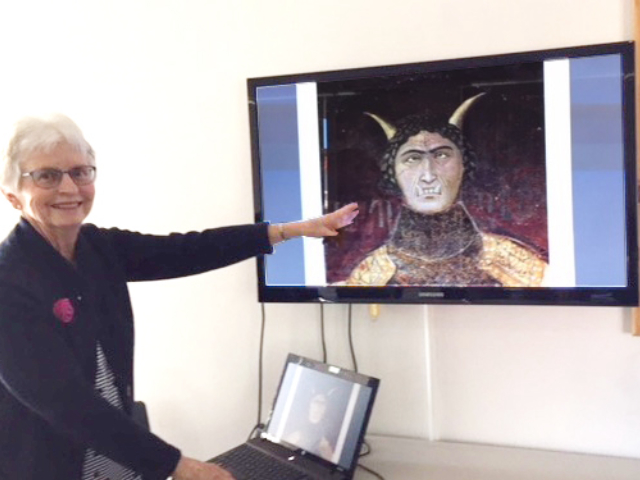
Image from Gay's presentation on the Golden age of Renaissance glassmaking centred in Venice. After outlining the history of Venetian glassmaking, including the 13th century moving of the glass furnaces to the island of Murano, she detailed the significant advances in glass production, particularly by the great glassmaker, chemist and artist, Angelo Barovier. In the mid-15th century he invented the process to create ‘Cristallo’ glass – the first time that clear, pure glass could be made. ‘Cristallo’ was instrumental in the making of the famed Venetian mirrors. Barovier’s process led to other inventions and processes that made Venetian glass one of the most valued and expensive luxuries in the Renaissance period – sought after by kings, queens, dukes, princes, cardinals, archbishops, and ambassadors.

 text 1
text 1
 text 2
text 2

